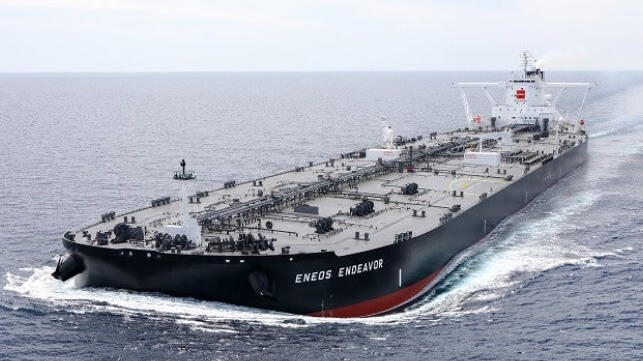Project Produces Hydrogen Carrier Capable of Being Shipped on Tankers

An eight-month demonstration project is launching in Australia to manufacture hydrogen in an inert carrier that is stable and easy to ship using conventional tankers and ship the product to Japan to fuel hydrogen fuel cell applications. The project which is being undertaken by Japan’s Eneos Corporation is the second step in a commercialization project which will see large quantities of green hydrogen produced from solar power and shipped to Japan to power hydrogen fuel cell cars.
Enos, which is Japan’s largest fuel provider, is working to expand into a regional leader in Asia for energy. The new hydrogen carrier, methylcyclohexane (MCH), is produced using a proprietary low-cost “electrochemical synthesis of organic hydride” method developed by Eneos and first demonstrated in 2021 in a project as part of Green Innovation Fund Projects of Large-scale Hydrogen Supply Chain Establishment commissioned by the New Energy and Industrial Technology Development Organization (NEDO).
The company held an opening ceremony for its new production facility located in Brisbane, Australia on January 30. They said full-scale production in the pilot project will commence in February and run through September.
The company explains that MCH containing the hydrogen is will be produced using a 150-kilowatt-scale medium-sized electrolyzer, which is approximately 200 times larger than the electrolyzer used in the 2021 demonstration. The larger version consists of stacked electrodes with a surface area of 3 square meters and realizes increased efficiency in MCH production. Eneos says it is among the largest electrolyzer electrodes in industrial use today.
The demonstration plant will produce green MCH by combining the medium-sized electrolyzer with a 250-kilowatt solar power system in Queensland. The aim is to maximize production efficiency and confirm the durability of the electrolyzer under subtropical conditions. Eneos says in the test which runs till September 2023 they are seeking to develop optimal operation and control technologies for it when plant operation is adjusted to match fluctuations in solar power. Eneos will use the knowledge gained from this demonstration plant to develop a larger-sized 5-megawatt-scale electrolyzer (more than 30 times larger than the medium-sized electrolyzer used in this demonstration plant) for commercialization by FY2025.
Additionally, during the demonstration period, MCH equivalent to approximately 2 to 3 tons of hydrogen for 400 to 600 fuel cell vehicles (FCVs) will be produced and transported to Japan, where hydrogen will be extracted from MCH in ENEOS' Central Technical Research Laboratory.
The MCH that is produced using the electrochemical synthesis method with toluene can be shipped at ambient temperatures on existing tankers, unlike hydrogen which requires complex handling and super cold temperatures. This is one of several projects looking to simplify the shipment of hydrogen by suspending it in a carrier. The company’s process at the destination after shipping is the dehydrogenation of the MCH removing the water and rendering hydrogen fuel.
Eneos has a fleet of 12 crude tankers, 14 product tankers, and 13 LPG carriers including newly built vessels from Japan Marine United.
